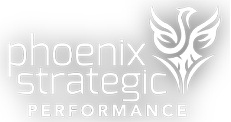As we evaluate the human capital required for leading and managing a robust, future-focused IT operation today, the skills/knowledge (skills) required today are fundamentally different from those required in the past.
Current research tells us that organizations perform much better when their IT department has a seat at the strategic table and the business skills to innovate, transform, and speak the business language. These concepts are easy to talk about but much harder to implement and measure.
The ability to innovate, transform, and speak the language of the business requires multiple, interdependent business skills. Just being technically competent is no longer adequate. A successful IT leader must be able to perform at sustainable peak levels with all the necessary business skills, and here’s the challenge. When we speak with the C-Suite, below are the skills they expect from their senior IT leadership:
6 Critical Skills for the New IT Organization
Previously, technical competencies, or what we refer to as knowledge skills, were the table stakes for getting hired and moving up the IT ladder. As a result, very many IT organizations have IT leaders sitting in critical leadership roles who have very few of the leadership skills necessary to lead them into the future.
Formerly, when it was common practice to hire the best technical person for the job, if that same technical person did not possess the other necessary skills or only 5/6th of the complete skill set, what consequence would that have for the required robustness, future-focused IT organization?
IT Human Capital Skills Gap Analysis
IT organizations are at a crossroads right now. It’s time for every IT organization to perform an IT Human Capital Skills Gap Analysis:
Step 1: Perform a human capital audit and benchmark each role against the business strategy
Step 2: Determine which roles are:
- Change leadership roles
- Maintenance leadership roles
- Knowledge roles
- Partner roles
Step 3: Determine the required optimal associated skills for each role
Step 4: Assess each employee at every level in the IT organization against determined role and skill benchmarks
Step 5: Determine the current ‘Skill Competency State of the Overall Organization”.
When conducting this type of audit, we often see that IT leadership and management professionals score moderate to high on technical skills but very low on leadership skills. This is to be expected since technical skills have been overweighed in the required skill mix. This is accompanied by the assumption that leadership skills will ‘just happen’. We know that most leadership skills are learned skills that must be taught, monitored, and measured. They don’t ‘just happen’ in IT or in any other discipline.
Today’s organizations are experiencing rapid change at multiple levels. Most of that change will impact or be driven by technology. Today and into the future, the IT function will be at the core of managing organizational responses to that change. If your IT leadership is not operating at ideal, peak performance, how can both IT and their organizations compete, grow, and sustain profitability for future viability?
It’s time for IT to examine itself, develop its human capital, and prepare for the future. Make no mistake—it will not ‘just happen’!
Are you looking to build the IT department of the future? Download the IT Competency Checklist to help you determine if your IT Department is ready to perform at sustainable peak levels for all necessary business skills in your organization.






